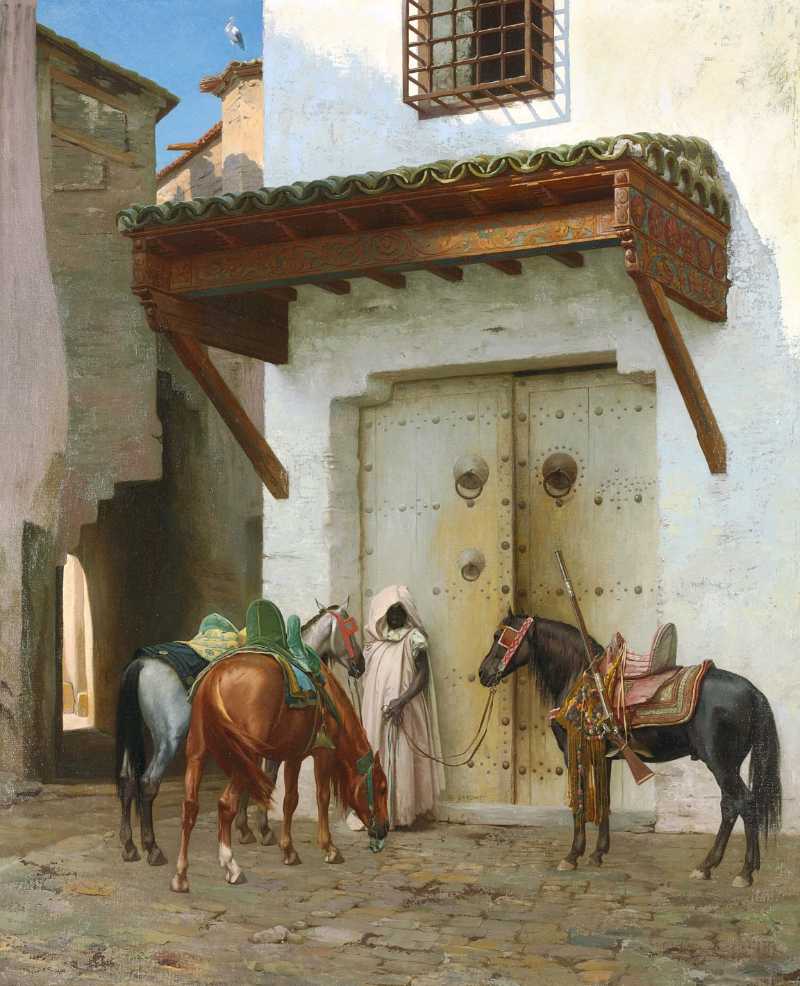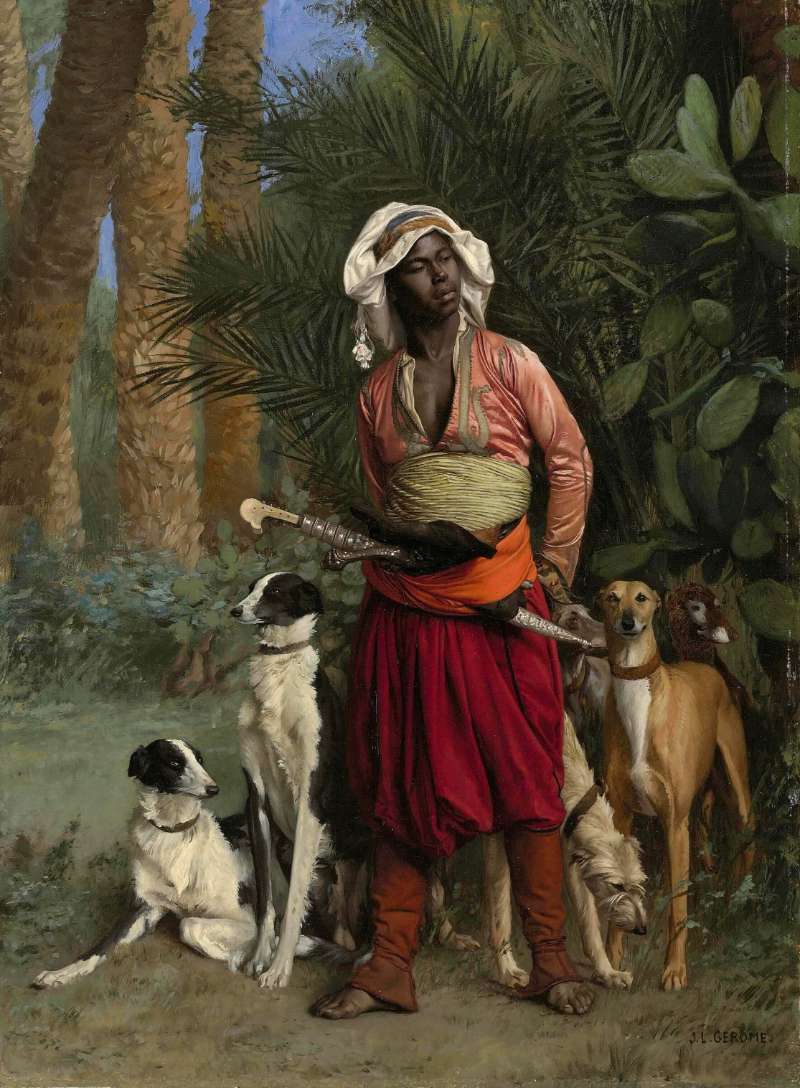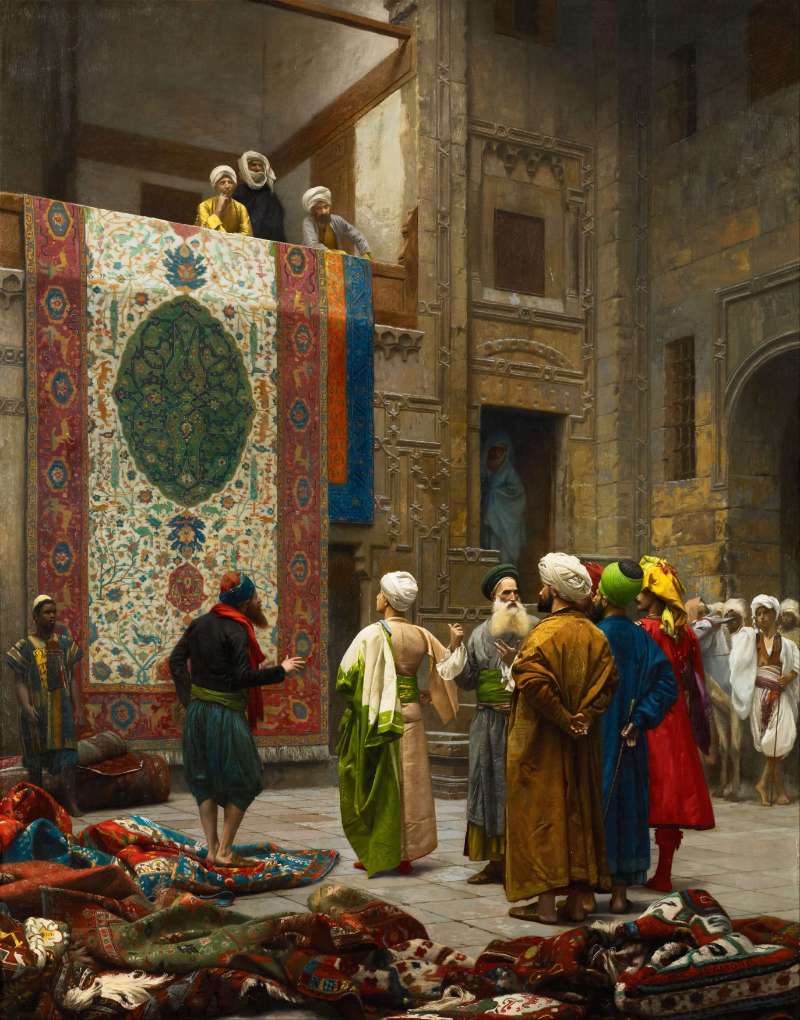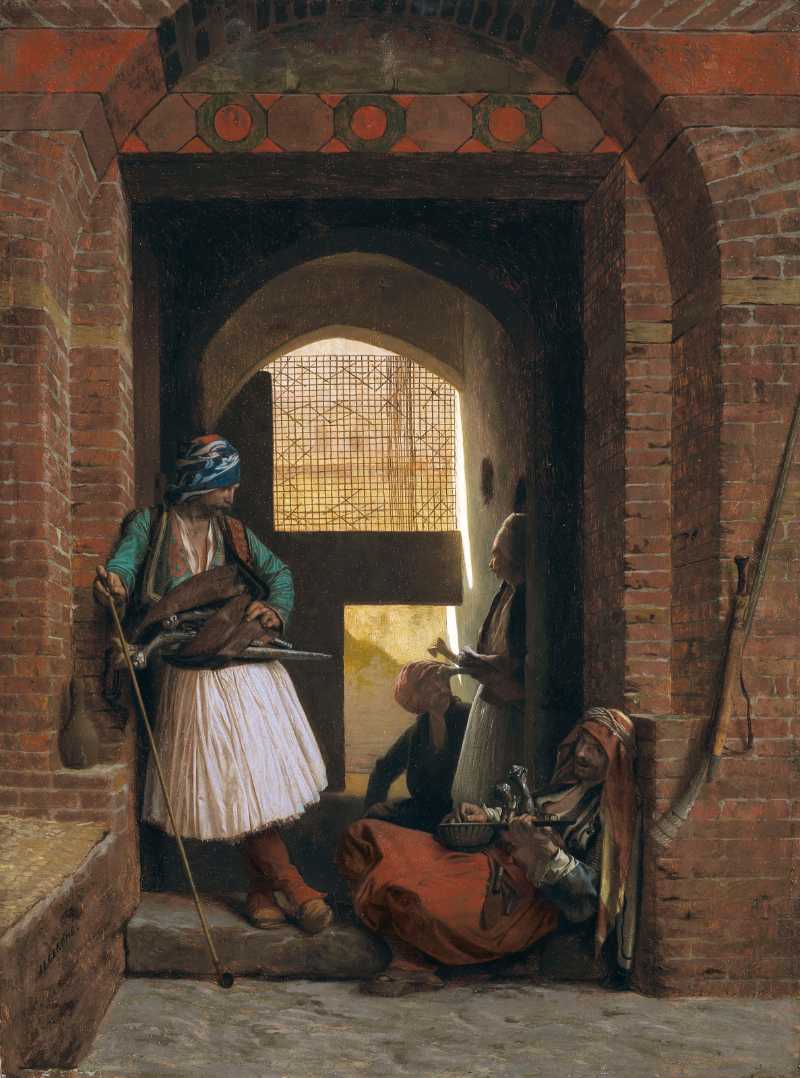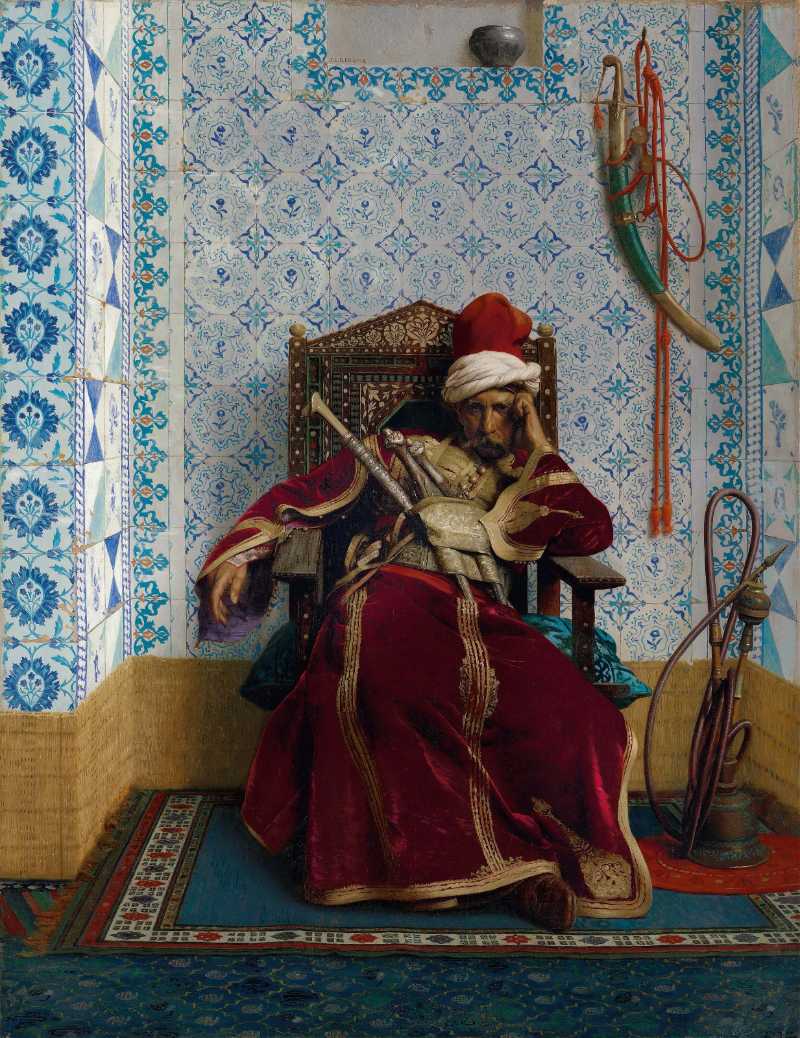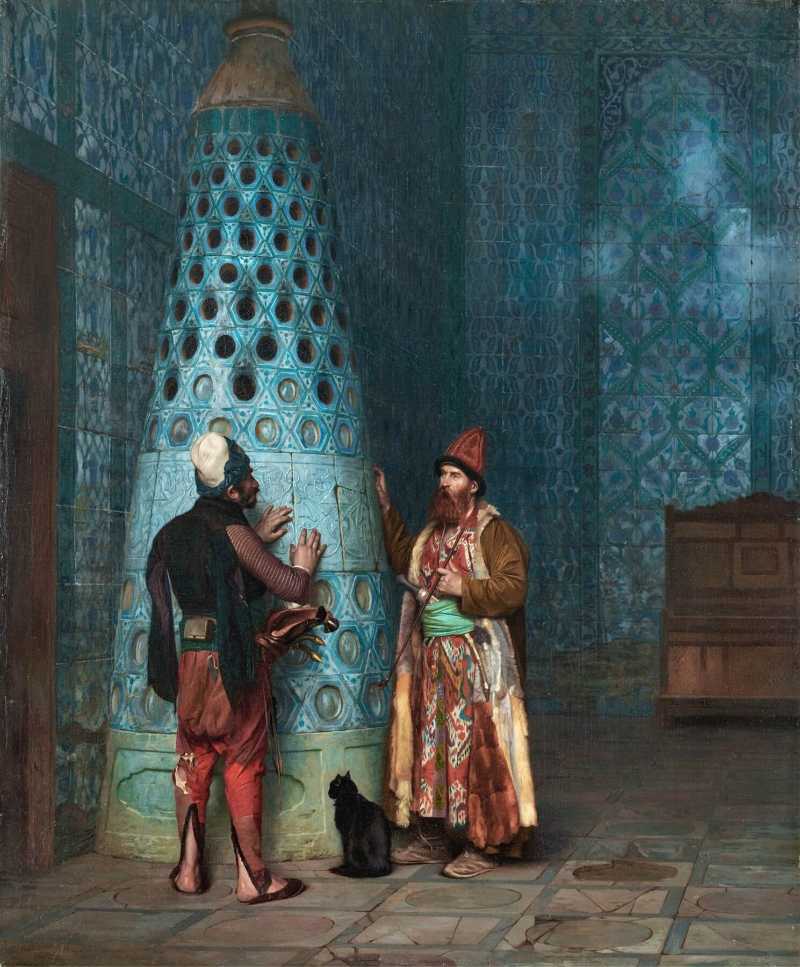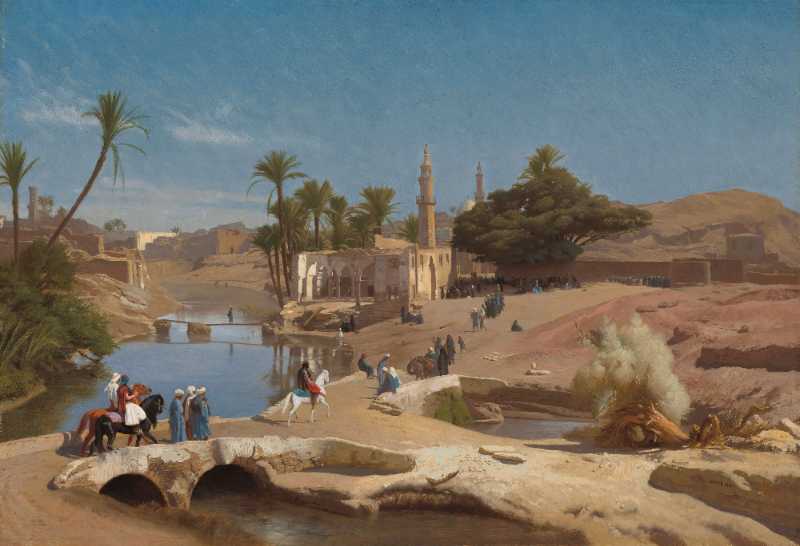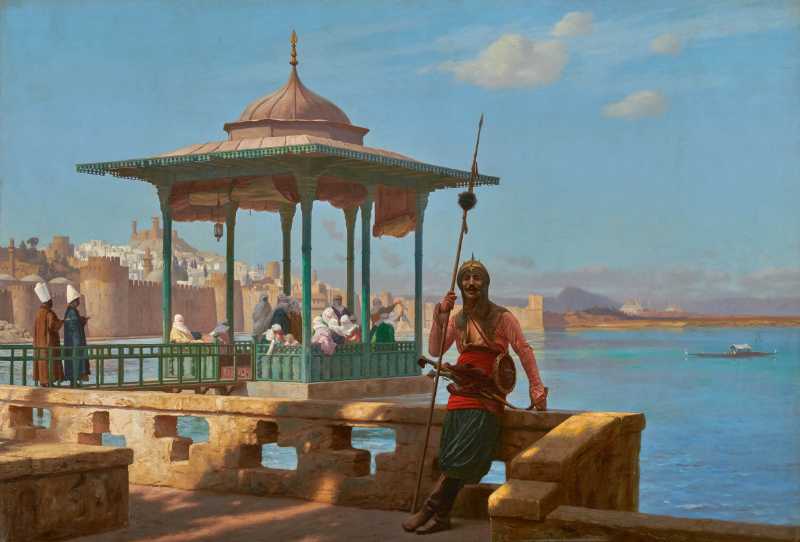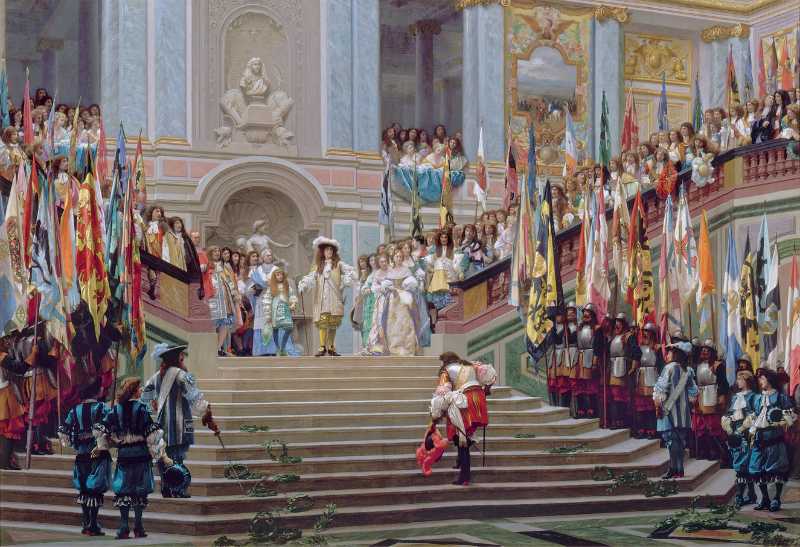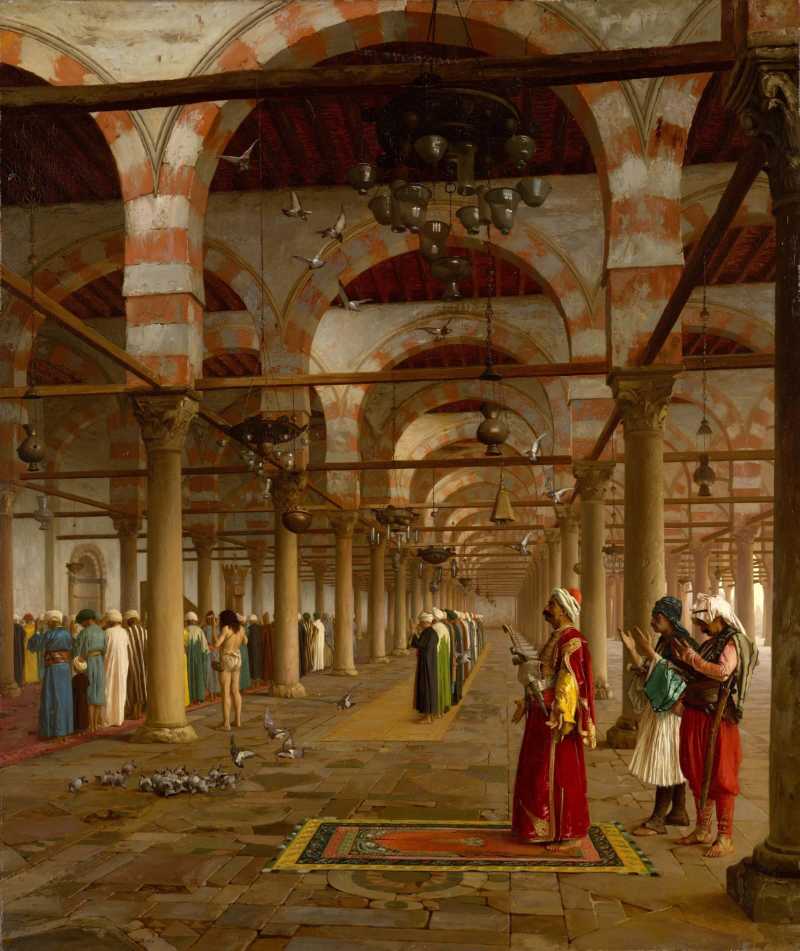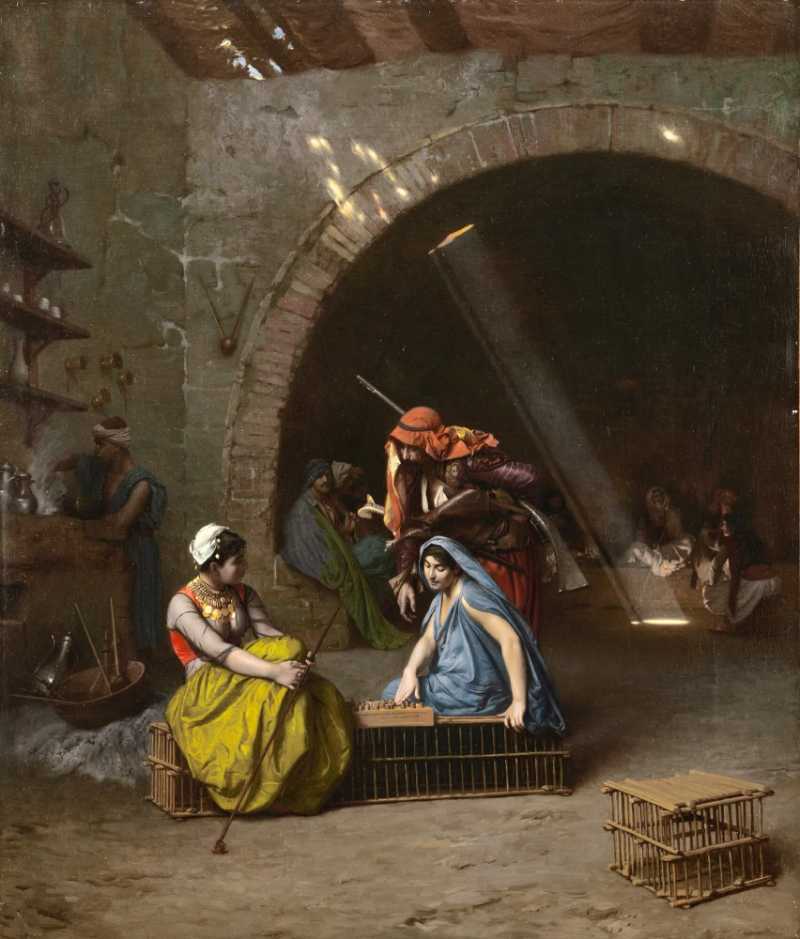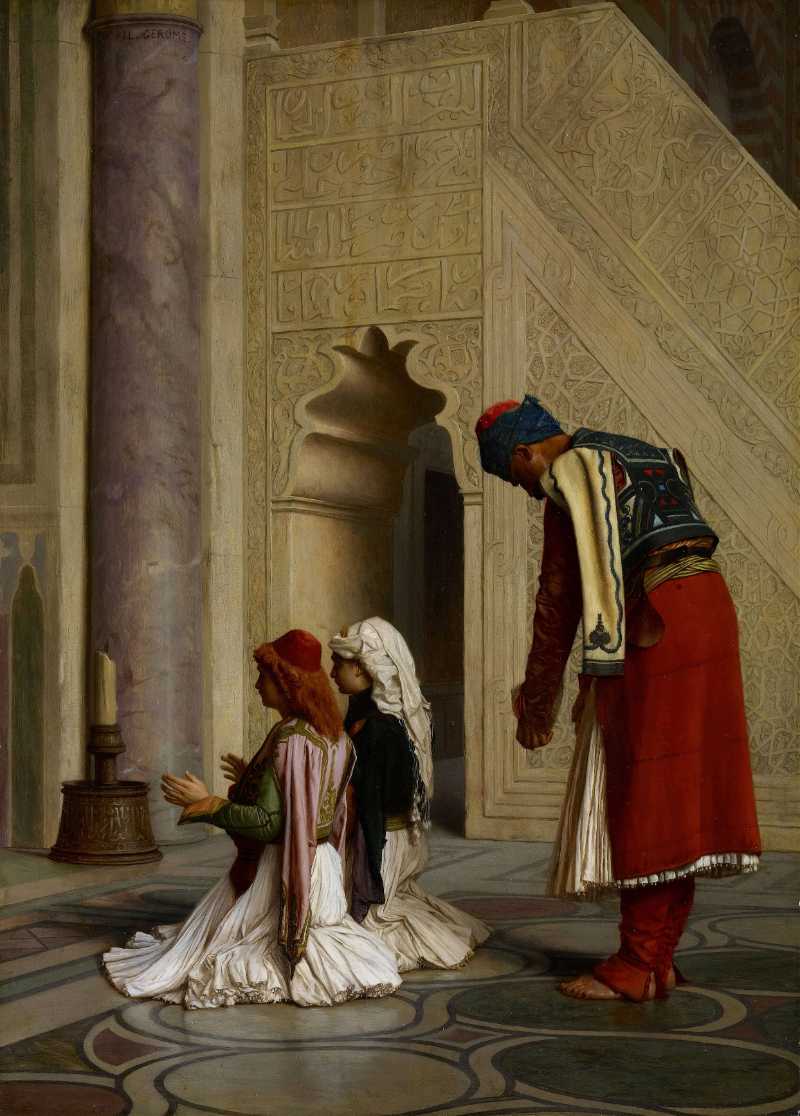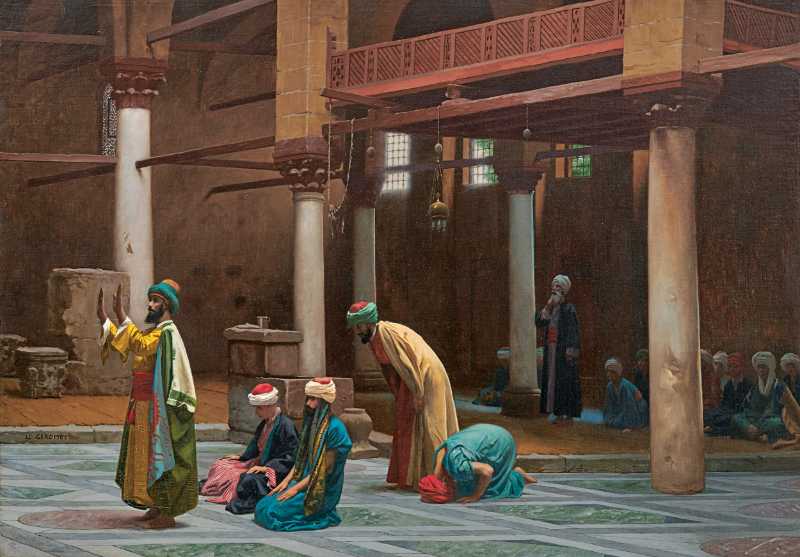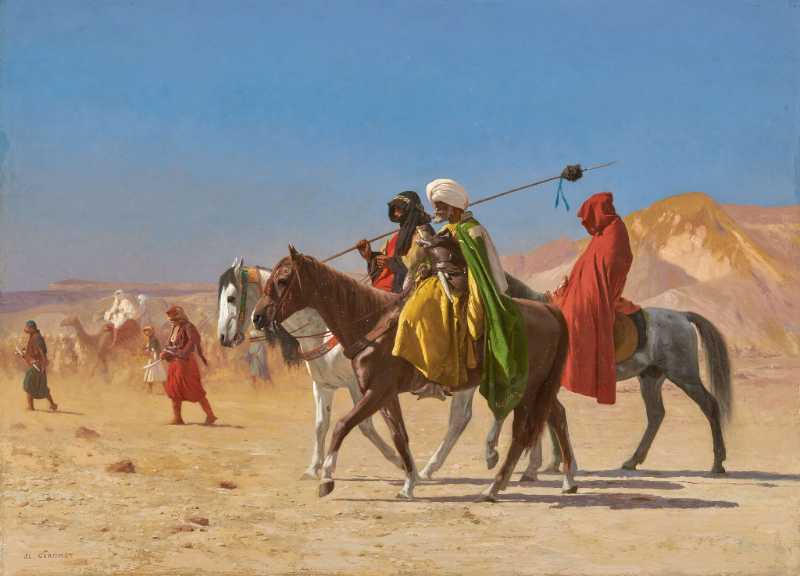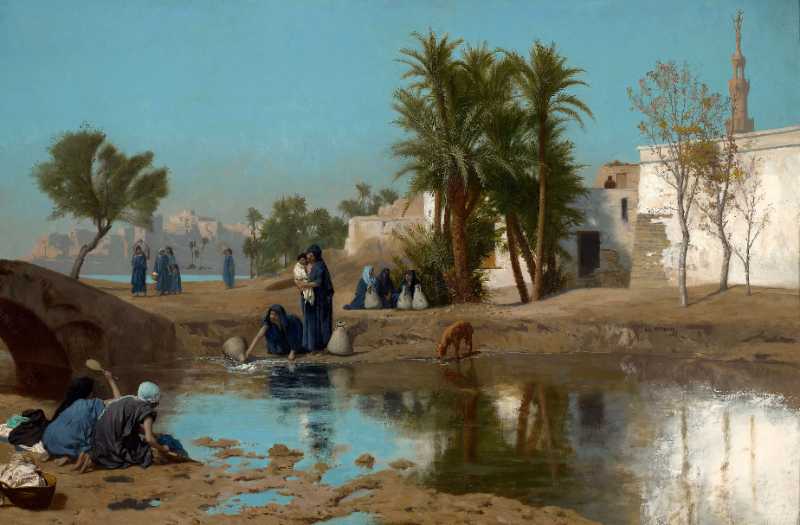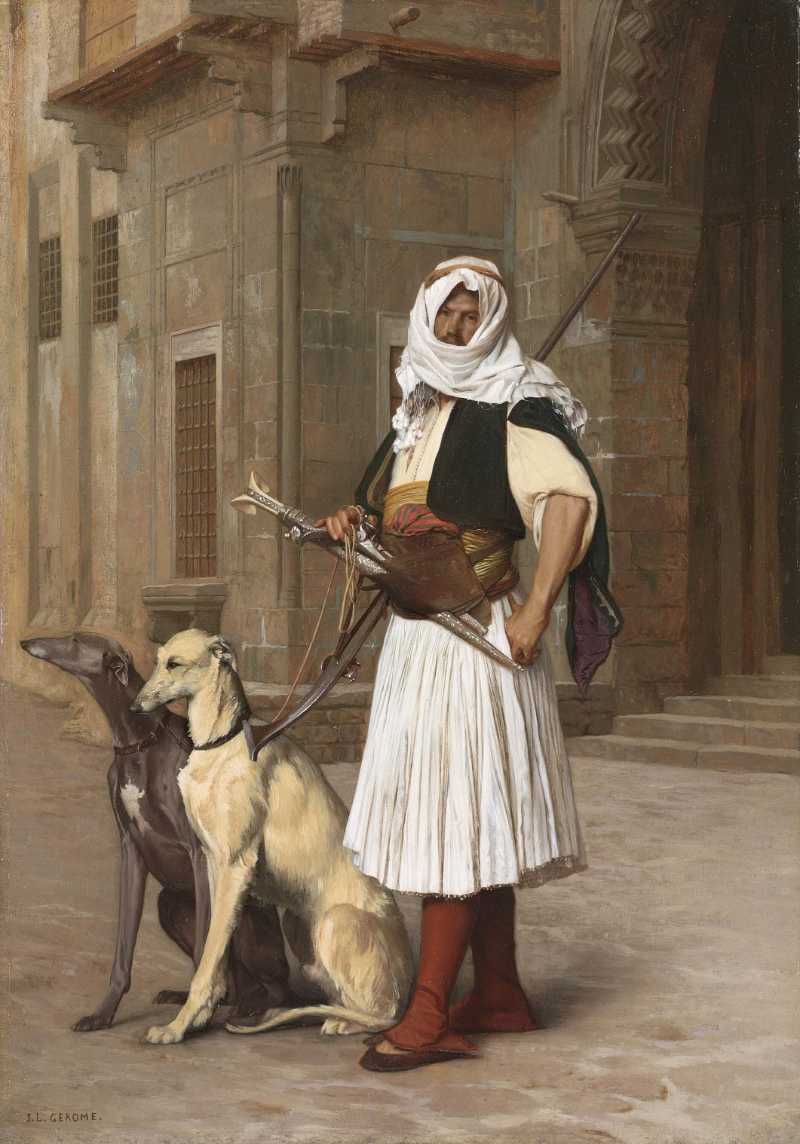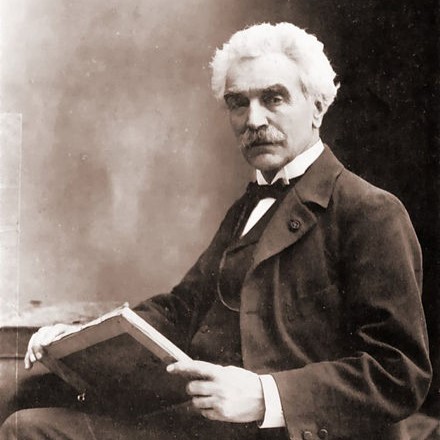
Jean-Léon Gérôme
Jean-Léon Gérôme was born at Vesoul, Haute-Saône. It was here that Gérôme first received instruction in drawing during his youth in school. He was instructed by local artist and teacher Claude-Basile Cariage, under whom he produced work of sufficient quality to merit more auspicious tutelage. In 1840 he was sent to Paris at the age of 16 where he studied under Paul Delaroche, whom he later accompanied to Italy in 1843. He visited Florence, Rome, the Vatican and Pompeii. On his return to Paris in 1844, like many students of Delaroche, he joined the atelier of Charles Gleyre and studied there for a brief time. He then attended the École des Beaux-Arts. In 1846 he tried to enter the prestigious Prix de Rome, but failed in the final stage because his figure drawing was inadequate.
His painting The Cock Fight (1846) is an academic exercise depicting a nude young man and a very thinly draped young woman with two fighting cocks, with the Bay of Naples in the background. He sent this painting to the Paris Salon of 1847, where it gained him a third-class medal. This work was seen as the epitome of the Neo-Grec movement that had formed out of Gleyre's studio (including Henri-Pierre Picou and Jean-Louis Hamon), and was championed by the influential French critic Théophile Gautier, whose review made Gérôme famous and effectively launched his career.
Gérôme paintings were so widely reproduced that he was "arguably the world's most famous living artist by 1880." The range of his works includes historical paintings, Greek mythology, Orientalism, portraits, and other subjects. He is considered one of the most important painters from the academic period. He was also a teacher with a long list of students.
